Think of your favorite audio brands. How big do you suppose they are? I’m talking number of employees, revenue, that sort of thing. I imagine at least one of the firms on your mental list is a very small operation. Perhaps with just a few employees working out of a relatively small space, churning out hand built DACs or speakers or maybe custom in-ear monitors. On the other side of the spectrum, you probably thought of at least one largish company – maybe an AKG, Sennheiser, NAD, Revel, etc, who is either big on their own or perhaps big due to a parent “holding” company which owns several other audio firms as well.
Some of these guys have quite a few employees, especially if we count all the various divisions. Fine Sounds Group, which owns venerable brands such as Wadia Digital, Sonus Faber, Audio Research, and McIntosh, reported over 60 million dollars in sales back in 2011. That’s not small change by any stretch of the imagination. The McIntosh Labs brand alone has well over 100 employees crafting fine equipment. D+M Group, which combines Denon, Marantz, Boston Acoustics, and some others, has roughly 2,000 employees worldwide. While some of their product is more consumer level stuff, a lot of it is definitely geared towards audiophiles. No doubt, that’s significant.
ASUSTeK computer company, commonly known as just Asus, is a massive company on an entirely different scale. I’m talking 20,000+ employees and half a trillion dollars in revenue. And judging by the past few years, they are growing rapidly. Contrast that with electronics juggernaut Sony who lost billions of dollars and cut thousands of jobs each year for the past 4 years. Sony seems to have a renewed interest in high-quality audio but time will tell if that lasts – if the budget stays in the red and Sony restructures to “focus on their core competencies” as it were, I can’t imagine the division responsible for $27,000 speakers would still be around, no matter how much praise those speakers earn. However, a large, young, and growing company like Asus doing audiophile gear would really be welcome. Asus dipped their toes in the water a few years back with the successful line of Xonar Essence computer sound cards, but lately they seem more inclined to attack the market head on. That means more engineering resources, market research, and downright cash to spend on making sure the gear really stands out.

Their Essence One standalone DAC/headphone amp was the talk of the town for a while, and I really enjoyed their more modestly priced Essence STU – it never seemed to get a major release in the USA, but based on my review unit it had a lot going for it. Yet I wondered what Asus could really do if they aimed higher than either of these devices – a design clearly worthy of being called “high-end”, with looks and sound to match, bringing to bear the full weight of that massive engineering budget.
Asus must have heard my speculation because their latest product is just that – the Essence III ($1,999). Now, some would argue the only “true” high-end DACs come from the likes of Esoteric and dCS, and cost many thousands of dollars. I personally think the sweet spot for the segment is somewhere between one and two thousand – numerous examples have shown that to be the case in my particular system, though of course one occasionally finds something worth talking about even with a price below or above that range.
The Essence III is ASUSTeK’s all out assault on state-of-the-art audio, featuring all the bells and whistles one could possibly expect. It’s a fully balanced DAC with DSD capability, a quality preamp with relay based stepped attenuator, and a headphone amp with balanced and single-ended outputs. If Asus nails all three functions, it will indeed be worthy of competing with the traditional players in this segment; I’m thinking Benchmark, Grace Design, and Burson, that sort of device. But that’s a rather big “if” indeed.
The Outside
I’ll come right out and say that I really dig the aesthetic of the Essence III. With a metallic black chassis and brushed aluminum front panel in contrasting silver, it reminds me of vintage receivers from the 60s and 70s. Brands like Fisher, Sansui, and Pioneer made some excellent integrated amp/tuner devices, and the black enclosure was usually available in lieu of the wood upgrade option. As much as those wood enclosures looked great when new, they don’t always hold up so well – my vintage McIntosh MAC1900 is in desperate need of a replacement wooden case, while my Fisher 700T still looks great in black and silver. It helps that the Essence III has two very prominent knobs on front, again hearkening back to the classic design of that era.
It is through this lens that I’m able to somewhat forgive the lack of information present – namely, any indication of incoming sample rate or bit depth. Heck, there’s not even an indicator confirming signal lock. What we get instead are individual LEDs showing active source, and another indicating “bit perfect” operation. This refused to light when connected to my PC, even with the proper Asus drivers loaded, until I also installed ASIO drivers. OSX systems are exempt from any drivers, though I never could get my MacBook Pro running Audirvana to activate the bit perfect indicator.
In a show of how serious they are about each function, Asus separates the headphone and line-out into exclusive knobs. A button labeled “output” switches from one to the other, with a corresponding fade of the inactive knob and illuminating of the newly active choice. It’s a small touch that nonetheless helps elevate the user experience. A simple remote allows for volume adjustment and switching of sources. A rear panel switch turns line-out to fixed volume mode for those who desire DAC-only functionality.
Folks who recall the former flagship Asus Essence One may see this as a bit of a downgrade. That device had all the same features plus sample rate LEDs and a button for turning upsampling on or off – we get no such feature here. In fact, Asus is completely mum on upsampling altogether. With the Essence One, they made a big deal about their “8X symmetrical upsampling” algorithm, but this time around I see no mention of the word whatsoever. We’ll discuss that shortly.
To sum up the rear panel – outputs in XLR and RCA, inputs in Toslink, Coaxial, AES/EBU, USB, and RCA. Yes, that’s a stereo RCA input, for feeding the device from another DAC or CD player or – more useful perhaps – a turntable (external phono stage required). I believe this inputs gets converted from analog to digital in order to be processed along the same path as incoming digital signals. In my casual testing, I did not notice any major degradation from this process, but I confess I didn’t listen all that critically…. it’s not a feature I have much use for but I’m glad it’s there all the same.
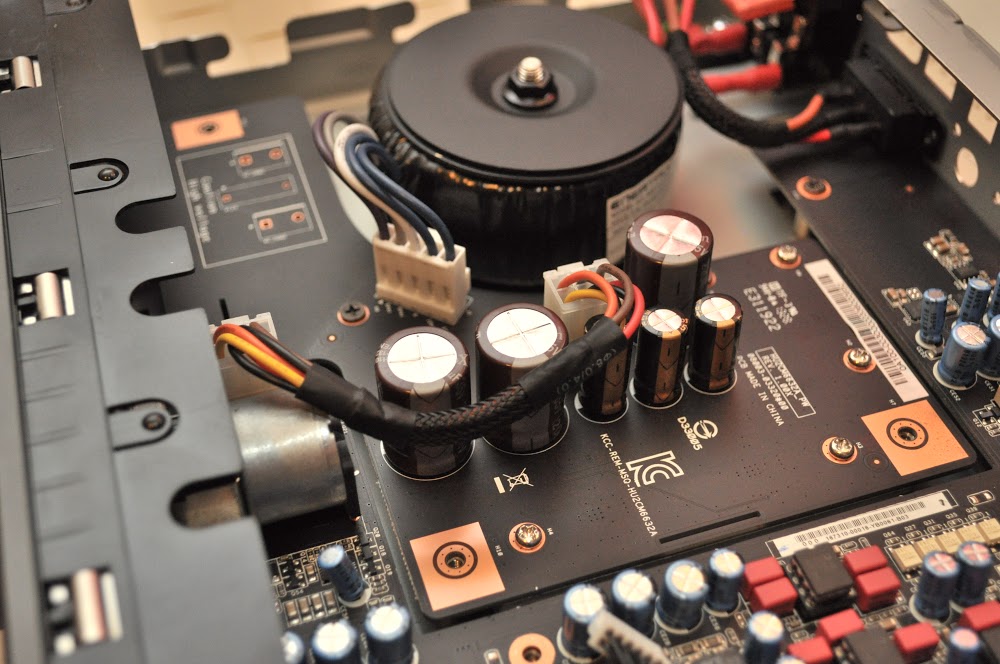
Power Supply
The Guts
As I examine the design of the Essence III, I see solid design choices at every step. The power supply, based around a large toroidal transformer, is double isolated, not only occupying a separate PCB but also being completely covered with a shielding plate. This keeps it from spreading unwanted interference to the rest of the system. Rather than go overkill here as some others do (think Burson again), Asus uses relatively modest filter capacitance on the power supply board and instead spreads the wealth to strategic locations downstream on the analog board. 6-layer PCBs used throughout show how seriously Asus takes this design.
Digital inputs live on another separate PCB that piggybacks onto the main unit. Here we find the latest C-Media CM6632A USB audio processor as well as the TI PCM9211 receiver for the remaining “legacy” digital inputs. Both of these are very good choices – the C-Media chip handles the latest DSD and 32-bit PCM, while the TI chip is among the best digital receivers available in terms of jitter. Often times I open the case on some expensive new DAC from a boutique audio manufacturer, whose marketing literature assures us is bleeding edge high-tech. Yet inside I find a practically ancient Cirrus Logic CS8416 digital receiver, circa 2002, with jitter specs not much improved from its predecessor the CS8414 hailing from the 1990s. DAC performance as a whole can only be as good as the sum of its parts, and I just don’t see why a modern designer would make that choice given the superior alternatives from Wolfson and Texas Instruments. So far the Essence III is off to a great start.
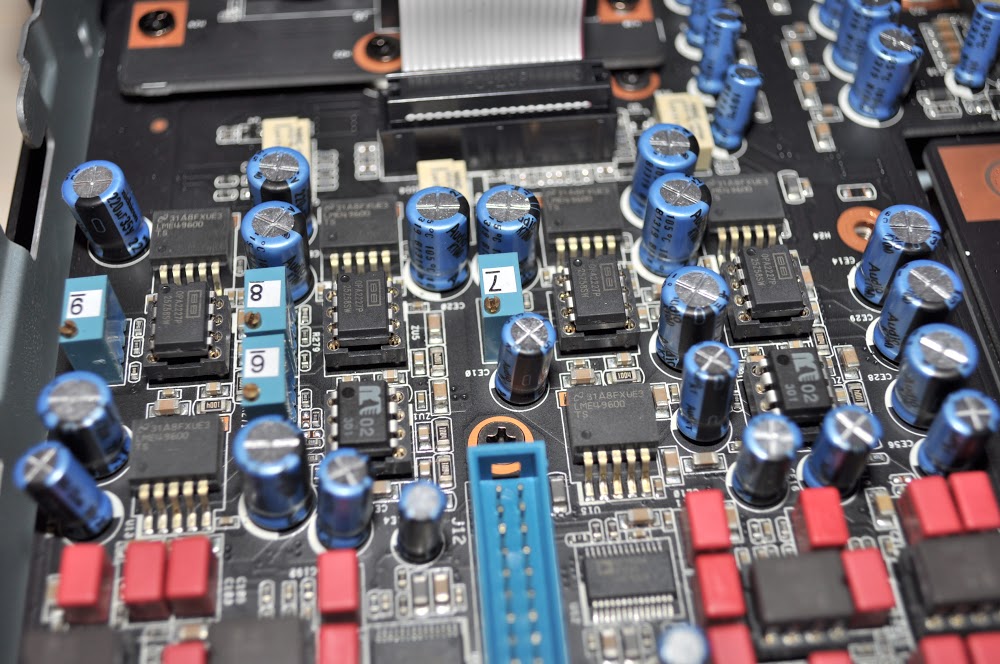
Headphone Stage: Separate path for balanced and single-ended
Yet another PCB – see the theme here? – contains the remaining digital bits as well as the analog section. The main D to A brains of the device are a pair of Analog Devices AD1955 chips, a classic dual mono combo used by the likes of Berkeley Audio, Accuphase, and Bricasti Design in far more expensive devices. I/V conversion and low-pass filtering are handled by the Analog Devices AD827SQ opamps that go for roughly $40 a pop. For reference, most opamps (even those labeled as high-quality, audio oriented models) cost just a few dollars each. Asus has them in sockets for easy swapping, though it will likely prove difficult to find anything offering a clear improvement.
While the Essence One had an Analog Devices SHARC chip for upsampling, I always thought it sounded best with that option disabled. Measurements seem to agree that something unwelcome happens during that process. This time around, Asus has no dedicated upsampling hardware on board, instead opting for native processing through the dual Analog Devices DAC chips (which do use oversampling). Considering their prior issue I’d say this is a wise move – the One was not all that effective in reducing jitter with upsampling engaged, so I don’t see it as a big loss anyway.
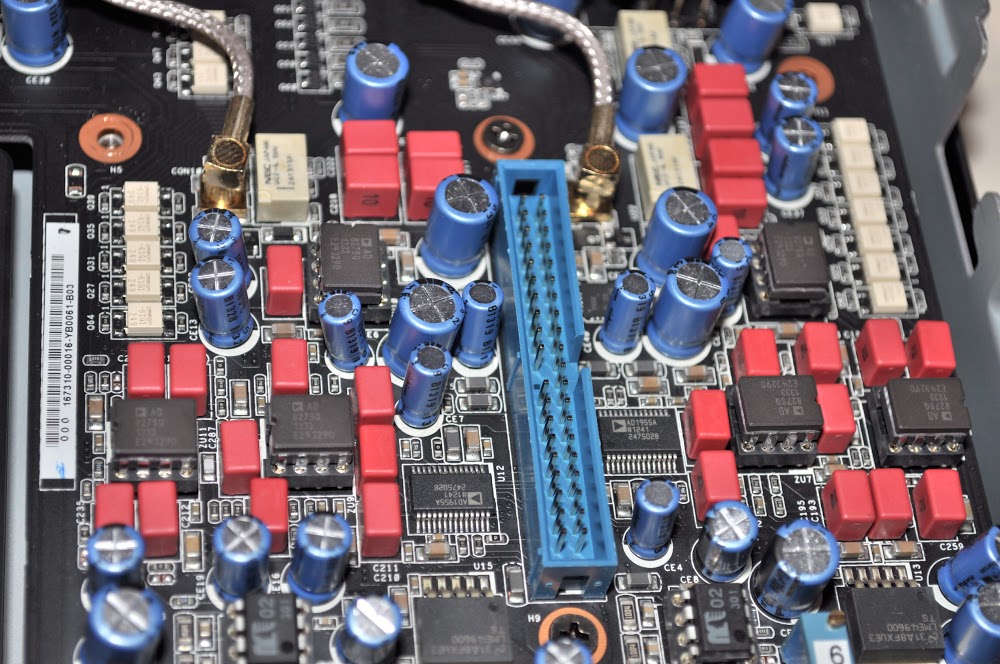
Dual DACs with AD827SQ for I/V and LPF
The all-important headphone amp section is no mere afterthought. Asus gives us a choice of single-ended 1/4″ jack or true balanced output. This is the one section I found myself scratching my head over, trying to figure out what Asus was thinking. On the plus side, both outputs sound quite good and seem well engineered. The single-ended output uses a pair of Muses 02 opamps from New Japan Radio Co (roughly $50 each) driving a pair of LME 49600 buffers, while the balanced path uses quad OPA2227 opamps driving four of the LME49600s. Both outputs sound quite good, with very subtle differences despite the variation in opamps between them. The unfortunate side? Asus made a really odd choice with the balanced output termination. Instead of the typical choices of 4-pin XLR or dual 3-pin XLR jacks, Asus instead used a pair of mini XLR jacks – which is odd, because there appears to be plenty of room for the normal XLRs to fit. They had the wisdom to include adapters converting mini to regular XLR. However, it seems somebody screwed up – we end up with male XLR jacks, where female jacks are what we actually need for balanced headphones. This means we end up using another adapter to get the required female XLR connections. In my particular situation, all my headphones terminate in the single 4-pin XLR style, which requires yet another adapter in the chain….. The end result is needlessly bulky to the point of almost being comical. In defense of Asus, even the legendary Bryston had something of a similar issue when they launched their BHA-1 headphone amp with the wrong gender outputs on the front panel. It seems there is “technically” no standard for this type of thing, though browsing HeadFi for 5 minutes is really all it would take to figure out the right choice as far as our needs are concerned. This situation can easily be corrected by Asus updating their bundled adapters to use the proper gender, perhaps offering them free to existing customers as well.
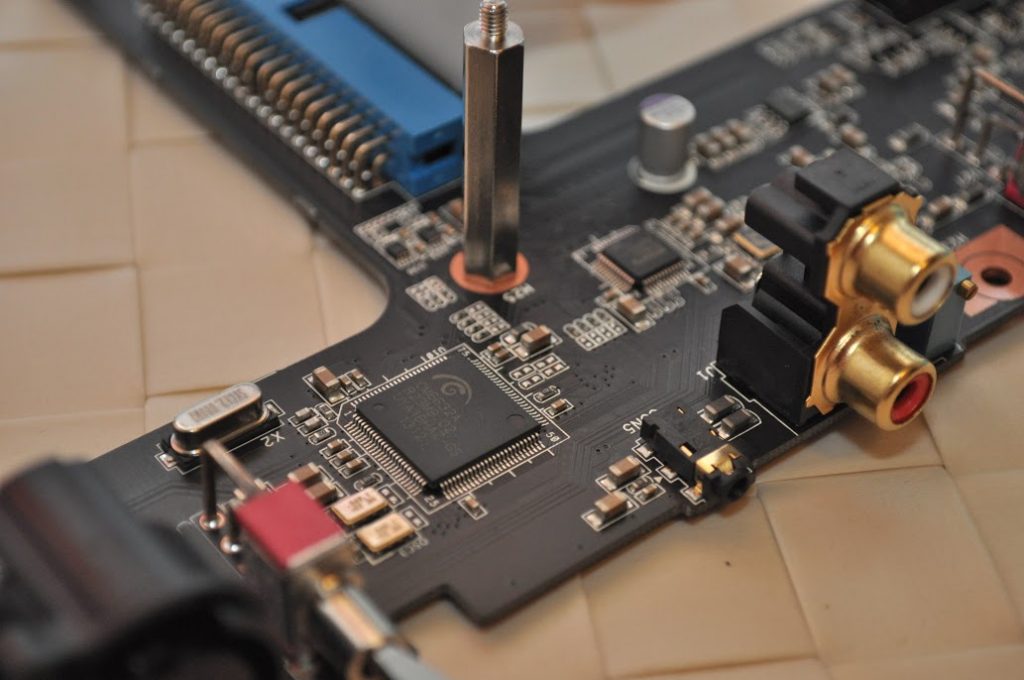
USB Card
Performance
The Essence III bills itself as a high-end device, so I took that at face value during my evaluation. I threw it right in the mix with my Auralic Taurus mkII headphone amp to get to the heart of what the DAC section was capable of. The Essence III took the place of a Burson Conductor – the 3rd such unit I’ve had in as many years. I keep coming back hoping to find an appreciation for the device – it’s highly regarded in reviewer circles – but each time I find myself somewhat disappointed. Not that it’s bad, mind you…. just not as good as it should be considering the nearly $2,000 price. Where the earlier Burson 160 models had seemed overly thick, the new model seems to swing too far in the other direction. I know a lot of people disagree but that’s been my experience despite trying to hear it otherwise.
I immediately noticed the difference with the Essence III feeding the Taurus, which in turn drove the Audeze LCD-3 in balanced mode (using an Effect Audio Thor cable). Where the Burson was somewhat tonally thin, with bland dynamics and only so-so treble extension, the Asus seemed more fleshed out on both ends. I noticed significantly more weight to the tone of Haydn’s Symphony No. 94 as conducted by Sir Colin Davis. The Asus had plenty of speed as befitting a modern high-tech DAC, but what really jumped out at me was the weightiness to the presentation. The same performance as handled by Burson just seemed a bit limp, for lack of a proper audiophile-approved term. Having said that, the Essence III didn’t go too far, turning Davis into Bernstein. Everything felt “right” insofar as was possible from this particular take, including the somewhat soft percussion on the “Military” Symphony. That’s just how it was played in this case and I can’t fault the Essence III for being honest.
Switching gears, I swapped in an Icon Audio HP8 mkII tube amp and a beyerdynamic T1. The Icon is single-ended only and the T1 had the stock cable, so no balanced action in this case. Sometimes a balanced source will really take a dump when asked to play via RCA outs…. not so with the Essence III. This was a fantastic combo – rich, dynamic, and oh-so-listenable. With the Icon amp swinging 17 Volts rms into 600 ohm loads, and the Essence III having excellent body and warmth, the sometimes-anemic T1 had no problem capturing the “swing” of Duke Ellington’s Far East Suite as presented wonderfully on the Bluebird: First Edition release. The T1 isn’t known for being massively dynamic but in this chain it had no shortage of oomph. On the flip side, the T1 is sometimes known as edgy or bright, and that gets minimized but not quite eliminated in this setup. That’s the nature of the headphone itself and the price we pay to get what some consider the ideal blend of detail and warmth; a sort of midway point between the richness of an Audeze and the hyper-detail of an HD800. Personally, I’m not completely sold on the T1 as compared to other flagships but I know several folks who absolutely love it, and this Asus/Icon combo helps me understand why.

PSU shield and USB card removed
I later paired the Essence III with my YBA Design WM202 CD player. This is a nice $1100 player which makes it a great test for a DAC like this – will there be a reasonable enough improvement compared to the already quite-respectable analog output on the YBA? I connected both to my Violectric V281 and could then quickly switch between WM202 alone versus WM202 feeding the Asus. Levels were matched using a Radio Shack SPL meter and listening was done with a HiFiMAN HE-6. I threw in the XRCD edition of Unity by Ernie Watts, a disc with which I am very familiar. No contest, the Essence III brought out significantly more detail, more layering, and a sense of scale the YBA just couldn’t match. The CD player alone felt like listening to a good recording, while the outboard DAC was closer to experiencing the real thing. More convincing. More “real” for lack of a better description. And that’s really what I look for in a DAC. Again, the YBA is no slouch, which is why I use it as a sort of “gatekeeper” to the higher echelon of gear. The original Asus One and even the later Muses Edition did not pass this test for me, while the Essence III certainly does.
To stretch the limits of the Essence III DAC section, I went all out using my best gear: Aurender X100L music server feeding the Asus, balanced out to a custom built KGSShv electrostatic amp, and finally the Stax SR-007mkII or SR-4070 earspeakers. The Aurender didn’t always play nice with the Essence III, which is common with the C-Media USB receivers. Everything is fine on redbook quality 16-bit/44.1kHz tracks, so I was still able to do plenty of listening, but hi-res PCM and DSD had issues. Note that Asus gives a convenient rear panel switch to fall back to USB Audio 1.0 mode, which increases compatibility (including driverless operation in Windows) but also tops out at 24-bit/96kHz – a limitation of the USB spec, not the Essence III itself. In any case, I had to throw in my Audiophillio 1 with PurePower to convert USB to SPDIF in order to get hi-res playback on the Asus. In both cases – native USB or DDC converted coaxial – the Essence III fit right in to this highly resolving system. I went through my rather large catalog of Blue Note releases and while the Audio Wave XRCD versions (which are basically just well-mastered redbook) still sound excellent, the fairly recent 24/192 versions from HDtracks are even better still. Both are done by Allan Yoshida using what I assume should be the same equipment and mastering techniques, so any difference is likely to come from that last step of down conversion to 16-bit/44.1kHz on the XRCD release. The Essence III allows this improvement – relatively subtle at first, but more and more noticeable once you start looking for it – to shine through more clearly than the more affordable Yulong D200. I tried the NuForce DAC-100 and the Burson Conductor, both well-respected devices in the $1,000 to $2,000 range, and again could not detect this difference as clearly. This tells me the Essence III is more accurate and resolving to subtle shifts in dynamics, improvements in micro detail, and general tonal accuracy as compared to these other devices. Yet it never comes across as having an overly analytical character, nor does it have an issue with treble etch such as I find on the Benchmark DAC 1 HDR. If anything, it veers in the other direction, being slightly more on the smoother, more musical side of things. But resolving power is definitely not lacking either.
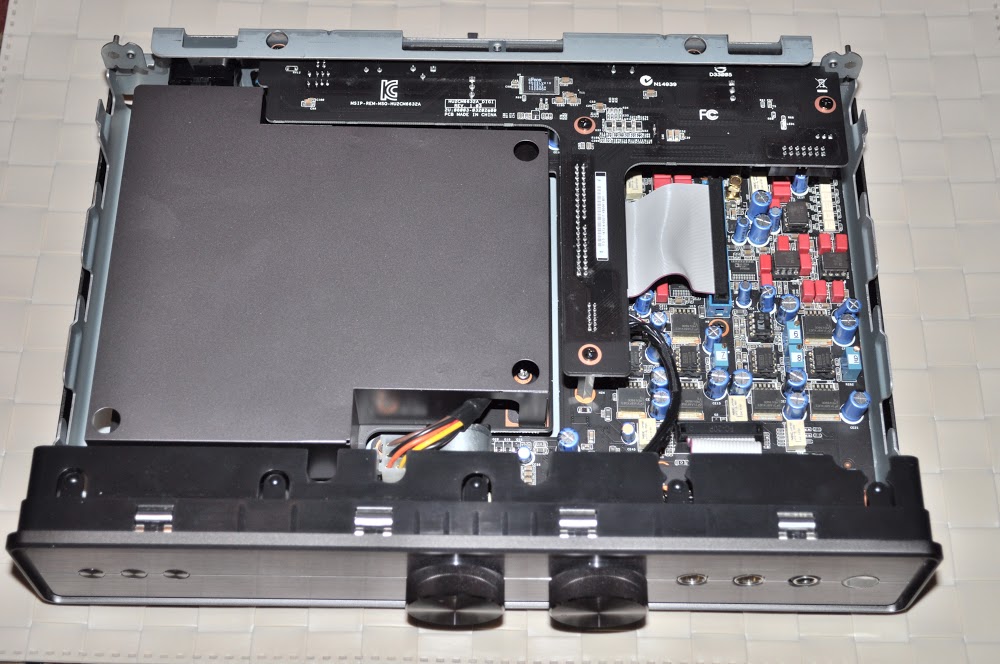
Reassembled
Headphone Out
Having fleshed out the character of the DAC portion, I set out to investigate the headphone amplifier. After all, these types of all-in-one devices tend to skimp when it comes to the headphone out. The designers know that headphone use will likely not be the main attraction. Most buyers are in it for the DAC – sure, they might throw on a pair of headphones now and again, but the real star of the show is the D/A conversion. Asus bucks that trend by making the Essence III highly capable with most headphones. Getting past the gender snafu, the balanced output sounded ravishing with my HiFiMAN HE-500 using a balanced leash from Toxic Cables. Sub bass impact was exceptional on Murder by The Crystal Method, and of course I just had to go through all the usual Massive Attack test tracks to make double sure. At that point I was all subbed out so I shifted over to Gerry Mulligan’s Dream a Little Dream for a change of pace. “Jeru” has a unique style and tone from his baritone sax, with an equal sense of richness and grace that kept me hooked for all 14 tracks. The Essence III left me wanting for very little – impressive for any amp much less a built-in.
I tried the single-ended output with my Alpha Dogs and again felt the resulting sound was of a very high caliber – I could improve it, but it would take an expensive dedicated amplifier, adding bulk and cost to what is initially a rather compact and generally satisfying setup. At high volumes I felt the Alpha Dogs got a little more harsh or grainy than I would have liked, but running a more reasonable volume mitigated that for the most part. The only real limitation I found was the HiFiMAN HE-6, which was clearly not being fed enough juice to make it happy. All my other planar magnetic models and all my traditional dynamic headphones sounded completely at ease with either the balanced out or the SE mode. I thought the balanced output was slightly more airy, while the 1/4″ jack was sometimes more direct and insightful. This was such a minor difference as to not really matter all that much – I’d be happy to use either of them.
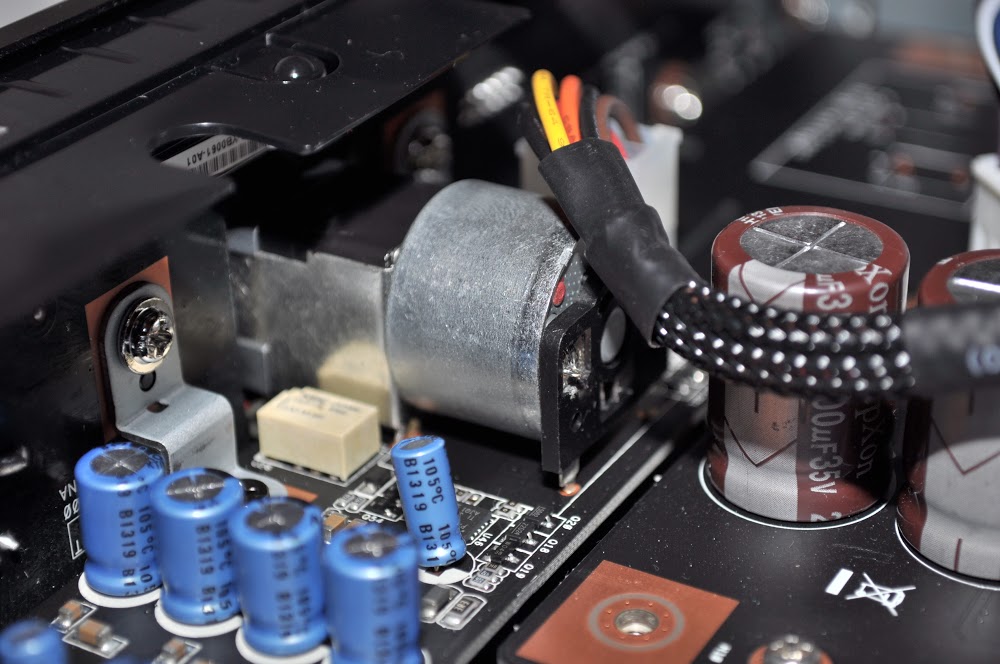
Volume
Asus gives the output impedance as 10 ohms through either of the outputs. This means low impedance dynamic headphones like Grado and Audio Technica may not be an ideal match, and in-ear monitors using balanced-armature designs are generally off the table. This is slightly disappointing but not unexpected – we see it rather frequently on these types of integrated devices. It could be worse, but I still think it’s something of a missed opportunity on a flagship device such as this. That said, the amp works very well with planar magnetic headphones (which don’t seem to mind a higher output impedance) as well as 300 ohm or 600 ohm models from Sennheiser and beyerdynamic. That leaves plenty of options for finding a good match. My personal favorite here is probably the classic Sennheiser HD650 in single-ended mode. It handles pretty much any genre you can throw at it with aplomb, having no major faults aside from a slight lack of bite up top. I feel the SE mode puts a bit more emphasis on the upper midrange compared to balanced mode – which, on the HD650, is not an area you want to relax on. On the other hand, the HiFiMAN HE-400 sounds very nice in balanced mode, benefiting from the wider soundstage presentation. So both outputs are nice to have. Again, this is a very capable amp, slightly darker in tonality, with good drive and a nice sense of space. I really wouldn’t bother adding an external amp unless it was quite a good one indeed – save up for a flagship model from Auralic, Eddie Current, Violectric, or something else of that caliber. Adding a $300 to $500 amp generally won’t do much good. Case in point, pawning headphone duties to a $350 NuForce HA-200 was no improvement at all. Slightly different, but not better. Adding a second HA-200 for a $700 monoblock configuration did end up bettering the built-in amp, especially with more difficult to drive planar magnetic models playing at higher levels. With most regular headphones the improvement was not substantial and I might still hold out for something higher up the food chain.
Complaints? Aside from the confusion on the balanced out, I have very little to gripe about. Obviously the Asus name doesn’t bring as much prestige as a more traditional audiophile brand with some heritage behind it. Folks demanding name recognition will probably look elsewhere. And if I’m being really picky, the volume control has a slightly unnatural feel to it. Turning the knob for either headphone or line out volume doesn’t produce a linear change like it would on most devices. It’s like there’s a very slight delay, and then the volume level jumps to whatever position the knob settled at. You don’t get the usual gradual increase or decrease as the knob turns unless you go slowly. If I didn’t know better I’d say it feels like a digital volume control implementation; like messing with the volume slider in Foobar2000. Of course, the truth involves a microcontroller and onboard relays controlling volume resistors on the stepped attenuator, which means perfect channel tracking and no loss caused by digital attenuation. Still, the feel takes a little getting used to. Lastly, the sound – while excellent on its own terms – it might not fit some systems. Those looking for ultra-speed and clarity might do better looking elsewhere. The Essence III has certain warmth to it, an almost analog type feel that makes it very natural and listenable, but perhaps not as “immediate” or “crisp” as some might like. A Cambridge Audio 840C owner looking to upgrade while keeping the same flavor would probably not be satisfied with the Essence III. Some will consider that a compliment, others won’t.
One final “issue” to mention – Asus has not officially launched the Essence III in North America. While the device is busy winning awards all over the globe, Asus still needs to figure out distribution in this neck of the woods. At first I wondered what the big deal was…. Asus has tons of name recognition, so won’t there be plenty of dealers online and throughout the country that would be interested? But the more I considered it, the more I see the problem: Asus is indeed huge, with widespread distribution throughout North America. But not in this particular specialty market. Their computers and related components are easily found at stores like Best Buy, Fry’s, and Micro Center – none of which are really equipped to handle sales of audio gear of this caliber. You just don’t drop a $1,999 device on the shelf next to a bunch of sub-$100 sound cards and hope for the best; this sort of thing needs knowledgeable sales staff and ideally some nice gear to demo it with. I would think online sales would be a simpler proposition but no such luck as of yet – perhaps their large size precludes them from working with the usual suspects like Moon Audio and Todd the Vinyl Junkie, or perhaps those types don’t want their existing brands to compete with such a juggernaut. Whatever the case, those interested in the Essence III will have to import it – I know a few people in the USA who have done just that and are quite pleased with the end result. Guru readers in other areas will have an easier time of it.
Conclusion
All told, the Essence III is a big step for computer giant Asus. It not only sounds impressive, but actually manages to edge out some respected gear from well established competitors – the Burson Conductor, the Benchmark DAC 1 HDR, and the NuForce DAC-100 just to name a few. It’s a fantastic DAC, a very competent headphone amp, and though I didn’t spend as much time on it, a seemingly high-caliber preamp as well. I consider the Essence III a success in almost every way but one (those balanced adapters) and look forward to seeing it launch formally in the USA.














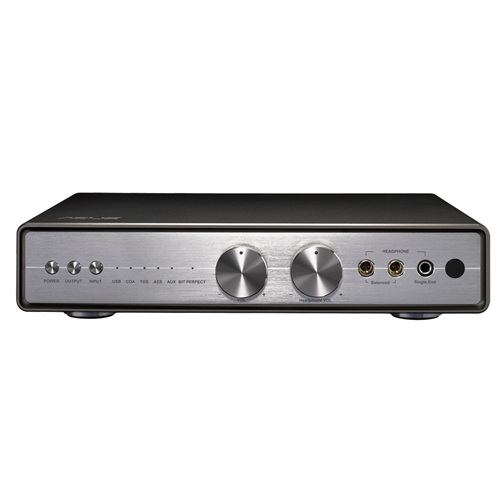
Reply
Reply
Reply
Reply
Reply
Reply
Reply
Reply
Reply
Want to join discussion?
Feel free to contribute!